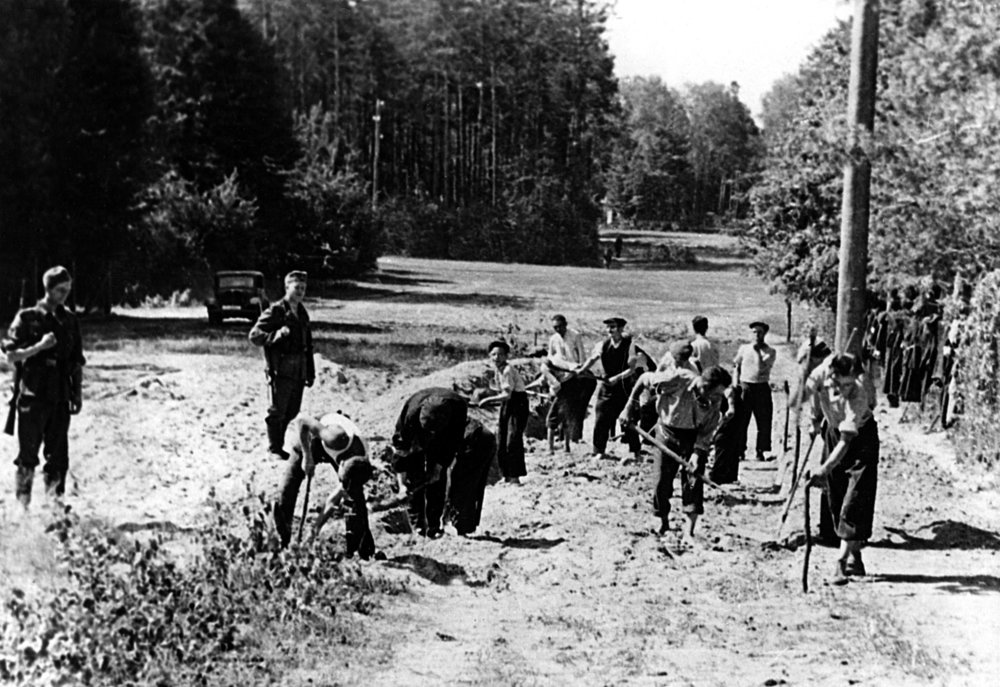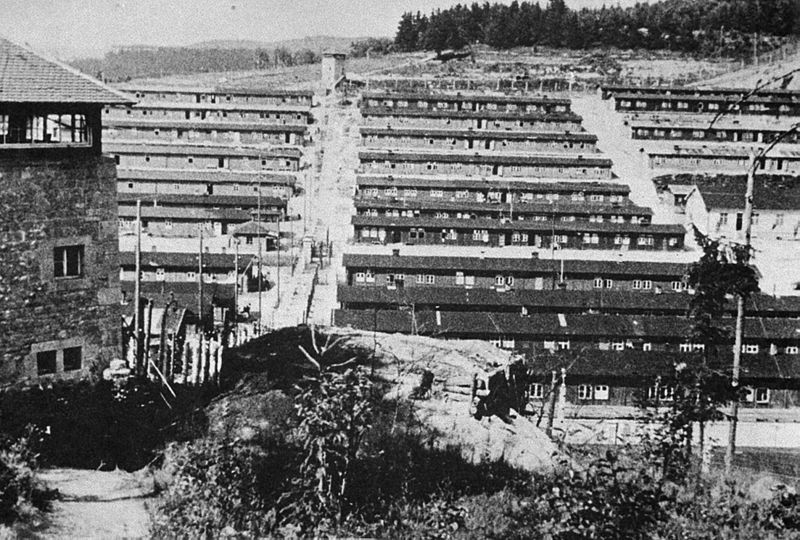Nazism, in full is known as National Socialism, was a totalitarian political movement headed by the leader of the party, Adolf Hitler in Germany. Nazism is based on far-right, nationalism and Aryanism. The Nazi’s believe in a “pure race”, which subsequently led a vision (and an attempt at reality) of the annihilation of the “enemies” of the Aryan race as the Final Solution.
What are the roots of Nazism?
Like with other political ideologies, Nazism was not just created on a whim – years of development took place in order to manifest itself in Nazi Germany.
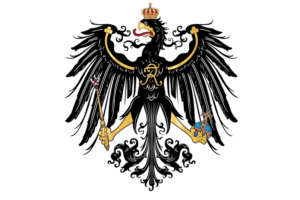 Nazism has roots which are traced back in part to the Prussian tradition, developed under Frederick William I (1688-1740), Frederick the Great (1712-68) and Otto von Bismarck (1815-98). They all regarded the militant spirit and the discipline of the Prussian army as the model for all civic life. In addition, the tradition included political romanticism and was particularly hostile to rationalism and to the principles which could be associated with political acts like the French Revolution.
Nazism has roots which are traced back in part to the Prussian tradition, developed under Frederick William I (1688-1740), Frederick the Great (1712-68) and Otto von Bismarck (1815-98). They all regarded the militant spirit and the discipline of the Prussian army as the model for all civic life. In addition, the tradition included political romanticism and was particularly hostile to rationalism and to the principles which could be associated with political acts like the French Revolution.
These traditions were later reinforced by the 19th Century glorification of science and the laws of nature, seemingly operating independently of all concepts of good and evil. During the 19th century, figures such as Richard Wagner and Houston Stewart Chamberlain greatly influenced Nazism with their radical claims of the superiority of the “Nordic” race (Germanic) over any other European race and all other races across the globe.
Hitler’s Influences
Hitler’s own viewpoint was influenced during his early years as well as these roots in German tradition and specific Austrian movements that professed a number of political sentiments about ant-Semitism and the expansion of the Germanic people.
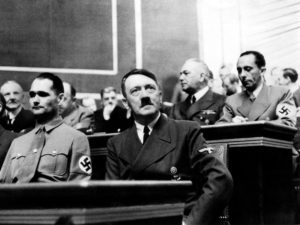 Many historians pinpoint Hitler’s interest in this ideology of Nationalism and his hatred of Jews to his bitter experiences as an unsuccessful artist who lived a difficult life in the Austro-Hungarian Empire. Some modern interpretations of Hitler’s reasons highlight the likelihood of mental illness, egged on by his experiences in his youth.
Many historians pinpoint Hitler’s interest in this ideology of Nationalism and his hatred of Jews to his bitter experiences as an unsuccessful artist who lived a difficult life in the Austro-Hungarian Empire. Some modern interpretations of Hitler’s reasons highlight the likelihood of mental illness, egged on by his experiences in his youth.
The effects of World War I
The aftermath of World War I and the devastation it caused Germany can be used as a historical indicator as to how Nazism grew in Germany when people saw themselves in Hitler and his struggles.
The defeat of Germany in 1918 resulted in disillusionment, hyperinflation and pauperization. The Treaty of Versailles (1919) was the formal settlement of World War I drafted without any participation from the Germans. It worked to essentially alienate many Germans with the high reparations in the form of money as well as territory.
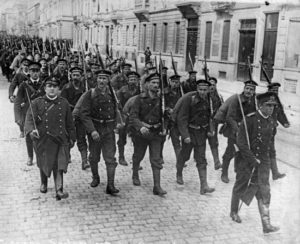 This social, political and economic frustration paved the way for the success of the propaganda of the Nazis to reach the general population of desperate Germans. The harsh treaty gave Hitler a starting point and a niche to which people were actually likely to listen to. Hitler worked to paint the German officials who agreed to the treaty as traitors, dubbing them the “November criminals” and his propaganda heavily featured a call for rebellion against these so-called criminals.
This social, political and economic frustration paved the way for the success of the propaganda of the Nazis to reach the general population of desperate Germans. The harsh treaty gave Hitler a starting point and a niche to which people were actually likely to listen to. Hitler worked to paint the German officials who agreed to the treaty as traitors, dubbing them the “November criminals” and his propaganda heavily featured a call for rebellion against these so-called criminals.
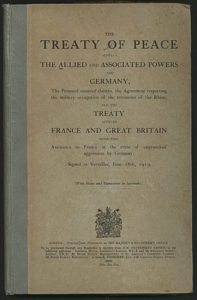 Hitler was also able to cleverly manipulate German voters by playing and projecting a fear caused of the Bolshevik Revolution which took place in Russian. This way, he was able to secure the support of many of those who bought into the widespread fear of Communist in the west.
Hitler was also able to cleverly manipulate German voters by playing and projecting a fear caused of the Bolshevik Revolution which took place in Russian. This way, he was able to secure the support of many of those who bought into the widespread fear of Communist in the west.
The common denominator
Hitler found his angle with the Jews, whom he identified with both Bolshevism as well as racial impurity. It was the not religion which Hitler highlighted as the issue with the Jews, it was their “race”, they were considered by the Nazis as a threat to the Aryan way of live and altogether different from the Germans.
Often considered a scapegoat, the Jews fell victim to widespread anti-Semitism and the persecution of the Jews was eventually written into law by the Nazi leadership. Their annihilation was also a policy, under the name the “Final Solution to the Jewish Question”.
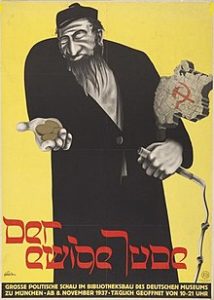 Propaganda was used in schools, newspapers, in films, in posters, at rallies and in work places to spread and increase anti-Semitism. The propaganda stated that the Jews were inferior, undesirable to society and not entirely human.
Propaganda was used in schools, newspapers, in films, in posters, at rallies and in work places to spread and increase anti-Semitism. The propaganda stated that the Jews were inferior, undesirable to society and not entirely human.
Creation of a Master Race
As well as the annihilation of the Jews, the Nazi’s wanted to create, promote and maintain a Master Race. This master race was people who had “pure blood”, in other words, Aryan features (preferably blonde hair, pale skin and blue eyes). The Nazi party worked to encourage Germanic “Aryans” to have more children.
In order to make this a reality, Heinrich Himmler, created a policy named Lebensborn in 1935, giving young “racially pure” women and girls the chance to give birth in secret. These girls had the choice of coming to a Lebensborn centre and convince a child with an SS officer. The child would then be taken from the mother and educated by the SS.
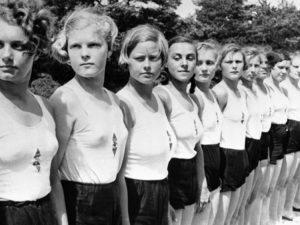 The policy went further during the development of World War II. In the Nazi-occupied lands, the SS were instructed to kidnap children with blonde hair and blue eyes to take them to the Lebensborn centres. Here, they would undergo brainwashing and Nazi education. This was known as Germanisation.
The policy went further during the development of World War II. In the Nazi-occupied lands, the SS were instructed to kidnap children with blonde hair and blue eyes to take them to the Lebensborn centres. Here, they would undergo brainwashing and Nazi education. This was known as Germanisation.
Non-Ayrans were seen as impure and even evil. At the top of the chain were the Aryans, with the Jews, Gypsies and Blacks at the bottom of the chain, according to Hitler. These people were nothing but a threat to the perseverance of the Germanic Master Race in the eyes of the Nazis.


